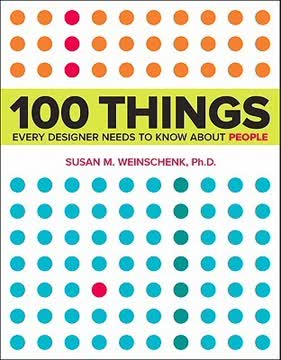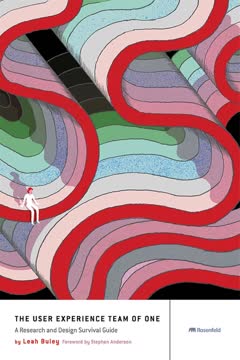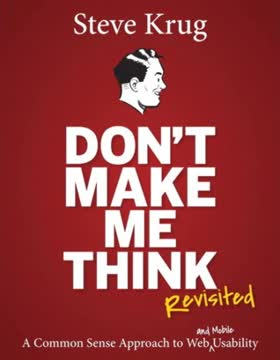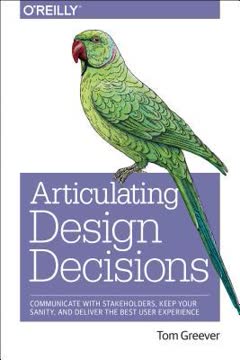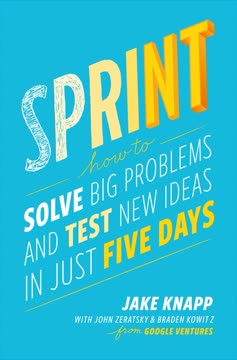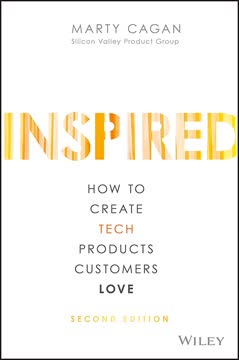つの重要なポイント
1. リサーチはデータ収集ではなく、批判的思考である
リサーチは批判的思考の別名に過ぎない。
リサーチの本質。 デザインにおけるリサーチは、大量のデータを収集したり、自分の正しさを証明することではない。知識を増やし、意思決定を支援するために体系的に調査することだ。良いリサーチには、規律、懐疑心、そして仮定に挑戦する意欲が必要である。適切な質問をし、関連情報を収集し、結果を批判的に分析することが求められる。
重要な原則:
- 明確な目的とリサーチ質問から始める
- 発見に基づいて仮定を変更する準備をする
- データの量よりも洞察の質に焦点を当てる
- チーム全体を巻き込み、共通の理解を築く
- リサーチを活用してリスクを減らし、意思決定の自信を高める
2. リサーチを始める前に明確な目的を定義する
他人に調査の議題を設定させると、曖昧なフォーカスグループと41色の青からドロップシャドウを選ぶアルゴリズムの間で迷子になるかもしれない。
明確な目標が効果的なリサーチを導く。 どのリサーチ活動にも飛び込む前に、何を知る必要があり、なぜそれが必要かを定義することが重要だ。まず、決定すべき重要な事項と、それを自信を持って行うために必要な情報を特定する。リサーチ質問を具体的で実行可能かつ実用的なものにする。
リサーチ目的を定義する手順:
- 対処する問題や機会を特定する
- 決定すべき事項を決定する
- 検証が必要な仮定をリストアップする
- 影響の大きさに基づいてリサーチ質問を優先順位付けする
- その質問に答えるための適切なリサーチ方法を選ぶ
リサーチの目的は、リサーチ自体を行うことではなく、デザインやビジネスの意思決定に直接役立つ洞察を得ることだ。
3. 組織リサーチはプロジェクト成功の鍵
デザインは深く冷たい宇宙空間で行われるのではない。デザインは多くのことを考えている人々の温かく汗ばむ近接で行われる。
コンテキストを理解する。 組織リサーチは、デザインが実装される複雑な人間の地形をナビゲートするのに役立つ。組織の構造、文化、優先事項を理解することで、課題を予測し、ビジネス目標に合わせて作業を進めることができる。
調査すべき主要な領域:
- ステークホルダーマッピング: 主要な意思決定者と影響力者を特定する
- ワークフロー分析: 現在のプロセスと問題点を理解する
- リソース評価: 利用可能な予算、時間、スキルを把握する
- 文化的要因: 暗黙のルールや組織の価値観を明らかにする
徹底的な組織リサーチを行うことで、味方を作り、潜在的な反対を中和し、デザインが成功裏に採用され実装される可能性を高める。
4. ユーザーリサーチは共感を築き、デザインの意思決定を支援する
デザインすること、コードを書くこと、文章を書くことは、危険を受け入れ、未知の領域に突き進み、絶えず変化する素材から新しいものを作り出し、毎日批判と失敗にさらされることだ。
共感がイノベーションを駆動する。 ユーザーリサーチは、自分の視点を離れ、デザイン対象の人々のニーズ、行動、コンテキストを真に理解することを可能にする。この深い理解は、ユーザーに共鳴し、実際の問題を解決するソリューションを作成するために不可欠だ。
効果的なユーザーリサーチ技法:
- エスノグラフィックインタビュー: ユーザーを自然なコンテキストで理解する
- コンテクスチュアルインクワイアリー: 関連するタスクを実行するユーザーを観察する
- 参加型デザイン: ユーザーをデザインプロセスに巻き込む
- ジャーニーマッピング: ユーザーの体験を時間軸で視覚化する
データを収集するだけでなく、デザインプロセスのあらゆる側面に情報を提供する真の共感と洞察を得ることが目標だ。
5. 競合リサーチは機会と脅威を特定する
最も手強い競争相手は、あなたの潜在顧客が現在使用しているものだ。
市場環境を知る。 競合リサーチは、製品やサービスが広範な市場エコシステムの中でどの位置にあるかを理解するのに役立つ。直接の競合だけでなく、代替ソリューションや潜在的な破壊者も含まれる。
競合リサーチの主要な要素:
- SWOT分析: 強み、弱み、機会、脅威を評価する
- 機能比較: 提供するものが他の選択肢とどう比較されるかを分析する
- ユーザーの認識: 顧客が異なるオプションをどう見ているかを理解する
- 市場動向: 新興技術や変化するユーザーニーズを特定する
競合の洞察を活用して、提供するものを差別化し、市場の変化を予測し、未満のユーザーニーズを特定してイノベーションの機会を見つける。
6. 評価リサーチはデザインソリューションを洗練し、検証する
どれだけ事前にリサーチとスマートなデザイン思考を行っても、最初からすべてが正しいわけではない。それでいいのだ。
反復と改善。 評価リサーチは、開発プロセス全体でデザインソリューションをテストし、洗練するのに役立つ。この反復的なアプローチにより、使いやすさの問題を早期に発見し、デザインの意思決定を検証し、ユーザー体験を継続的に改善することができる。
主要な評価リサーチ方法:
- ユーザビリティテスト: ユーザーがデザインと対話する様子を観察する
- A/Bテスト: 異なるバージョンを比較してパフォーマンスを最適化する
- ヒューリスティック評価: 確立された原則に基づいてデザインを評価する
- ユーザーフィードバック: 実際のユーザーから定性的な意見を収集する
評価は一度きりのイベントではなく、デザインライフサイクル全体を通じて継続的に行うプロセスだ。学んだことに基づいて変更を加える準備をする。
7. 分析とモデルは生データを実行可能な洞察に変える
質問と期待が明確である限り、実施したいリサーチの分類についてあまり心配しないでください。
データを理解する。 分析は、生のリサーチデータを意味のある洞察に変え、デザインの意思決定を促進するプロセスだ。これは、パターンを特定し、情報を統合し、ユーザーのニーズや行動を表すモデルを作成する協力的なプロセスである。
有用な分析技法とモデル:
- アフィニティダイアグラム: リサーチ結果をグループ化し、分類する
- ペルソナ: 主要なセグメントを代表する典型的なユーザーを作成する
- メンタルモデル: ユーザーの思考プロセスと期待をマッピングする
- カスタマージャーニーマップ: エンドツーエンドのユーザー体験を視覚化する
分析の目標は、単に結果を要約することではなく、デザイン戦略と意思決定に直接情報を提供する実行可能な洞察を生成することだ。
8. アンケートは適切に設計・使用しないと危険
アンケートはアンケートだ。適切なリサーチ方法ができないときの代替手段としてアンケートを使うべきではない。良いアンケートを設計するのは簡単ではないからだ。アンケートは最も難しいリサーチ方法の一つだ。
慎重に扱う。 アンケートは貴重な定量データを提供することができるが、誤用されやすく、誤解されやすい。設計が不十分なアンケートは、誤解を招く結果をもたらし、意思決定に対する誤った自信を生む可能性がある。
効果的なアンケートのための重要な考慮事項:
- 明確な目的: 何を学びたいか、なぜそれが必要かを定義する
- 適切なサンプリング: 回答者がターゲット人口を代表していることを確認する
- よく設計された質問: バイアスを避け、明確さを確保する
- 適切な分析: 適切な統計手法を使用する
- コンテクスチュアルな解釈: 他のリサーチと併せて結果を考慮する
アンケートはリサーチツールの一つに過ぎない。定性的な方法と組み合わせることで、ユーザーの動機や行動に対する深い洞察を提供するのが最も効果的だ。
9. アナリティクスはデザインを最適化するための定量データを提供する
測定可能だからといって、それが意味のあるものとは限らない。間違った指標を追跡することは、何も追跡しないよりも悪いことがある。
データ駆動の意思決定。 アナリティクスは、実際のユーザー行動を測定し、実世界のパフォーマンスに基づいてデザインを最適化することを可能にする。しかし、ビジネス目標とユーザーニーズに一致する意味のある指標に焦点を当てることが重要だ。
アナリティクスの効果的な使用のための重要な原則:
- ビジネス目標に一致する明確な目標とKPIを定義する
- 表面的な指標を超えて、実行可能な洞察に焦点を当てる
- 定量データと定性リサーチを組み合わせてコンテキストを提供する
- A/Bテストを使用してデザイン変更を検証する
- パフォーマンスデータに基づいて継続的に監視し、調整する
アナリティクスは強力なツールだが、人間の判断とデザインの専門知識を置き換えるものではない。常に広い文脈と最適化努力の潜在的な意図しない結果を考慮する。
最終更新日:
FAQ
What's "Just Enough Research" about?
- Overview: "Just Enough Research" by Erika Hall is a guide to conducting effective research in design and product development. It emphasizes practical, efficient methods that can be integrated into everyday work.
- Purpose: The book aims to demystify research, making it accessible to non-researchers and helping teams make informed decisions based on evidence rather than assumptions.
- Content Structure: It covers various types of research, including user, competitive, and evaluative research, and provides guidance on analysis, surveys, and analytics.
- Target Audience: The book is intended for designers, developers, and anyone involved in product development who wants to incorporate research into their process without becoming overwhelmed.
Why should I read "Just Enough Research"?
- Practical Guidance: The book offers actionable advice on how to conduct research efficiently, making it ideal for busy professionals who need to integrate research into their workflow.
- Demystifies Research: Erika Hall breaks down complex research concepts into understandable and manageable parts, making it accessible to those without a research background.
- Improves Decision-Making: By focusing on evidence-based decision-making, the book helps teams avoid costly mistakes and assumptions, leading to better product outcomes.
- Encourages Critical Thinking: It fosters a mindset of continuous questioning and learning, which is crucial for innovation and staying competitive in the market.
What are the key takeaways of "Just Enough Research"?
- Research as a Tool: Research is a tool for critical thinking and should be used to inform decisions, not just validate preconceived ideas.
- Types of Research: The book outlines different types of research, such as user, competitive, and evaluative, and when to use each.
- Collaboration is Key: Effective research requires collaboration and shared understanding among team members to ensure insights are applied effectively.
- Bias Awareness: Recognizing and mitigating biases in research is crucial for obtaining accurate and useful insights.
How does Erika Hall define research in "Just Enough Research"?
- Systematic Inquiry: Research is defined as systematic inquiry aimed at increasing knowledge about a particular topic.
- Types of Research: It includes pure research for new knowledge, applied research for real-world goals, and design research focused on user-centered design.
- Purpose of Design Research: Design research is about understanding the people for whom products are designed, focusing on their behaviors, needs, and contexts.
- Critical Thinking: Research is equated with critical thinking, emphasizing the importance of asking the right questions and seeking evidence-based answers.
What is the process of conducting research according to "Just Enough Research"?
- Define the Problem: Start with a clear problem statement that describes the topic and goal of the research.
- Select the Approach: Choose the appropriate type of research based on the problem statement and available resources.
- Plan and Prepare: Develop a research plan, including roles, recruitment, and materials needed for data collection.
- Collect and Analyze Data: Gather data through interviews, observations, or testing, and analyze it to identify patterns and insights.
How does "Just Enough Research" address common objections to research?
- Time and Money Concerns: The book argues that research saves time and money in the long run by preventing costly mistakes and rework.
- Lack of Expertise: It emphasizes that anyone can conduct research with the right mindset and tools, and provides guidance to develop necessary skills.
- Fear of Being Wrong: Encourages embracing being proven wrong as a learning opportunity, which leads to better decision-making.
- Infrastructure Needs: Suggests using existing tools and processes for research, highlighting that special infrastructure is not necessary.
What is the role of collaboration in research according to "Just Enough Research"?
- Shared Understanding: Collaboration ensures that insights are shared and understood by all team members, leading to more effective application.
- Roles and Responsibilities: Clearly defined roles and responsibilities within the research process help maintain focus and quality.
- Healthy Conflict: Encourages healthy conflict and questioning within teams to strengthen design decisions and avoid groupthink.
- Continuous Learning: Collaboration fosters a culture of continuous learning and questioning, which is essential for innovation.
How does "Just Enough Research" suggest handling biases in research?
- Acknowledge Bias: Recognize that bias is inherent in research and take steps to identify and mitigate it.
- Design Bias: Be aware of how personal goals or preferences can influence the design of studies and the interpretation of data.
- Sampling Bias: Ensure that research participants are representative of the target audience to avoid skewed results.
- Social Desirability Bias: Encourage honesty and confidentiality to reduce the influence of participants wanting to present themselves favorably.
What are the best quotes from "Just Enough Research" and what do they mean?
- "Make friends with reality": This quote emphasizes the importance of understanding the real-world context and constraints when conducting research and designing products.
- "Research is just another name for critical thinking": Highlights that research is about asking the right questions and seeking evidence-based answers, not just gathering data.
- "Questions are more powerful than answers": Encourages a mindset of continuous inquiry and learning, which is crucial for innovation and effective problem-solving.
- "The right questions keep you honest": Stresses the importance of questioning assumptions and seeking evidence to guide decision-making and avoid costly mistakes.
How does "Just Enough Research" differentiate between qualitative and quantitative research?
- Qualitative Research: Focuses on understanding behaviors, needs, and motivations through methods like interviews and observations. It provides rich, detailed insights.
- Quantitative Research: Involves measuring and analyzing numerical data to identify patterns and trends. It is useful for validating hypotheses and making generalizations.
- Complementary Methods: The book suggests using both methods together to gain a comprehensive understanding of user needs and behaviors.
- Bias and Limitations: Highlights the potential biases and limitations of each method and the importance of choosing the right approach for the research question.
What is the significance of user research in "Just Enough Research"?
- Understanding Users: User research helps designers understand the true needs, priorities, and contexts of their target audience.
- Empathy Development: It fosters empathy by allowing designers to see the world from the user's perspective, leading to more user-centered designs.
- Informed Decision-Making: Provides evidence-based insights that guide design decisions and reduce the risk of assumptions leading to poor outcomes.
- Continuous Improvement: Encourages ongoing user research to adapt to changing user needs and improve products over time.
How does "Just Enough Research" suggest using surveys effectively?
- Clear Objectives: Start with a clear research objective and ensure that the survey questions align with this goal.
- Question Design: Write simple, specific questions that are easy for respondents to understand and answer truthfully.
- Sampling Considerations: Be mindful of sampling bias and ensure that the survey sample is representative of the target population.
- Data Analysis: Analyze survey data carefully, considering potential biases and limitations, to draw meaningful conclusions.
レビュー
本書『Just Enough Research』は、主に肯定的な評価を受けており、UXリサーチ手法について簡潔かつ包括的にカバーしている点が称賛されている。読者はそのアクセスのしやすさ、実践的なアドバイス、そして魅力的な文体を高く評価している。初心者にとって価値があり、経験豊富なプロフェッショナルにとっても迅速なリファレンスとして役立つと多くの人が感じている。一部の人々は、内容が基本的すぎる、または特定の分野で深みが欠けていると批判している。全体として、ユーザーリサーチのアプローチを理解または改善しようとする人々に推奨されており、特に組織的および競争的リサーチに関するセクションが高く評価されている。
A Book Apart Series Series
Similar Books
